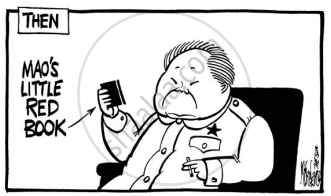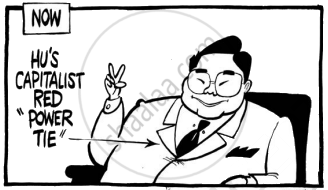Advertisements
Advertisements
Question
Explain any three steps taken by China to grow its economy.
Solution
Three steps taken by china to grow its economy are:
- Open Door Policy: The Open Door Policy was started by Deng Xiaoping. He wanted to open the Chinese economy to international investment through this program. He encouraged global MNCs to establish production units in China and offered them all available assistance. This resulted in an increase in employment and the expansion of China's economy.
- Robust Development of Infrastructure: Economic development requires the construction of accommodating infrastructure for a variety of reasons, including transportation and communication. The government aggressively extended roads, trains, and airports to improve mobility. This drew foreign institutions to invest in China's economy.
- Huge Investment of the State in Industrial Development: The Chinese government invested much in establishing new enterprises and developing new technology. These technologies were associated with information technology, space exploration, biotechnology, and other cutting-edge technologies. As a result, China's global image as an economic power has improved.
APPEARS IN
RELATED QUESTIONS
Trace the evolution process of the European Union.
Study the cartoon given below carefully and answer the following questions:

i. The given cartoon is related to which country?
ii. Which two symbols in this cartoon helped in identifying the country?
iii. What message does this cartoon convey to the world?
What does the logo on the ASEAN flag symbolize?
Assess the role of ASEAN as an economic association.
What were the objectives behind the formation of the ASEAN in 1967?
What are the major differences between the SAARC and the European Union as alternative centres of power?
Which of the following nations adopted an ‘open door’ policy?
Who proposed the ‘four modernizations’ in China?
When did China becomes a member of the WTO?
Who among the following adopted an ‘open door’ policy?
Which of the following is the only country that suffered the destruction caused by nuclear bombs?
Who among the following adopted an open-door policy?
Arrange the following in chronological order:
- China's accession to WTO
- Establishment of the EEC
- Establishment of the EU
- Birth of ARF
In which year, China ended its political and economic isolation with USA?
Which of the following was not an impact of New Economic Policy of China?
The present Chinese economy differs from its command economy. Which of the following point is true regarding this.
Which of the following points are causes for the rise of the Chinese economy.
- The first major decision was to end its political and economic isolation with the establishment of relations with the United States in 1972.
- They started with the privatization of agriculture in 1982, followed by the privatization of industry in 1998.
- Privatization of agriculture led to a remarkable rise in agricultural production and rural incomes.
Which of the following was not an impact of New Economic Policy of China?
In which year, China ended its political and economic isolation with USA?
Explain any two major policy decisions made by the Chinese government to open and develop its economy.
Evaluate any three steps taken by the Chinese leadership for the growth of Chinese economy.
Study the given cartoon carefully and answer the questions that follow:
 |
 |
- To which country are these two cartoons related?
- Japan
- Vietnam
- South Korea
- China
- Red Book is related to which ideology?
- Capitalism
- Communism
- Humanism
- Terrorism
- What does the 'Red Power Tie' depict?
- Negation of communism
- Acceptance of Capitalism
- Coordination of communism with Capitalism
- Negation of Capitalism
- What is the difference between 'then' and 'now' as per the cartoon?
- 'Rigidity' has increased now in the ideology of 'then'.
- Rigidity has decreased 'now' in the ideology of 'then'.
- The leader under 'then' and the leader under 'now' belong to different political parties.
- The leader under 'then' and the leader under 'now' belong to different organisations.
